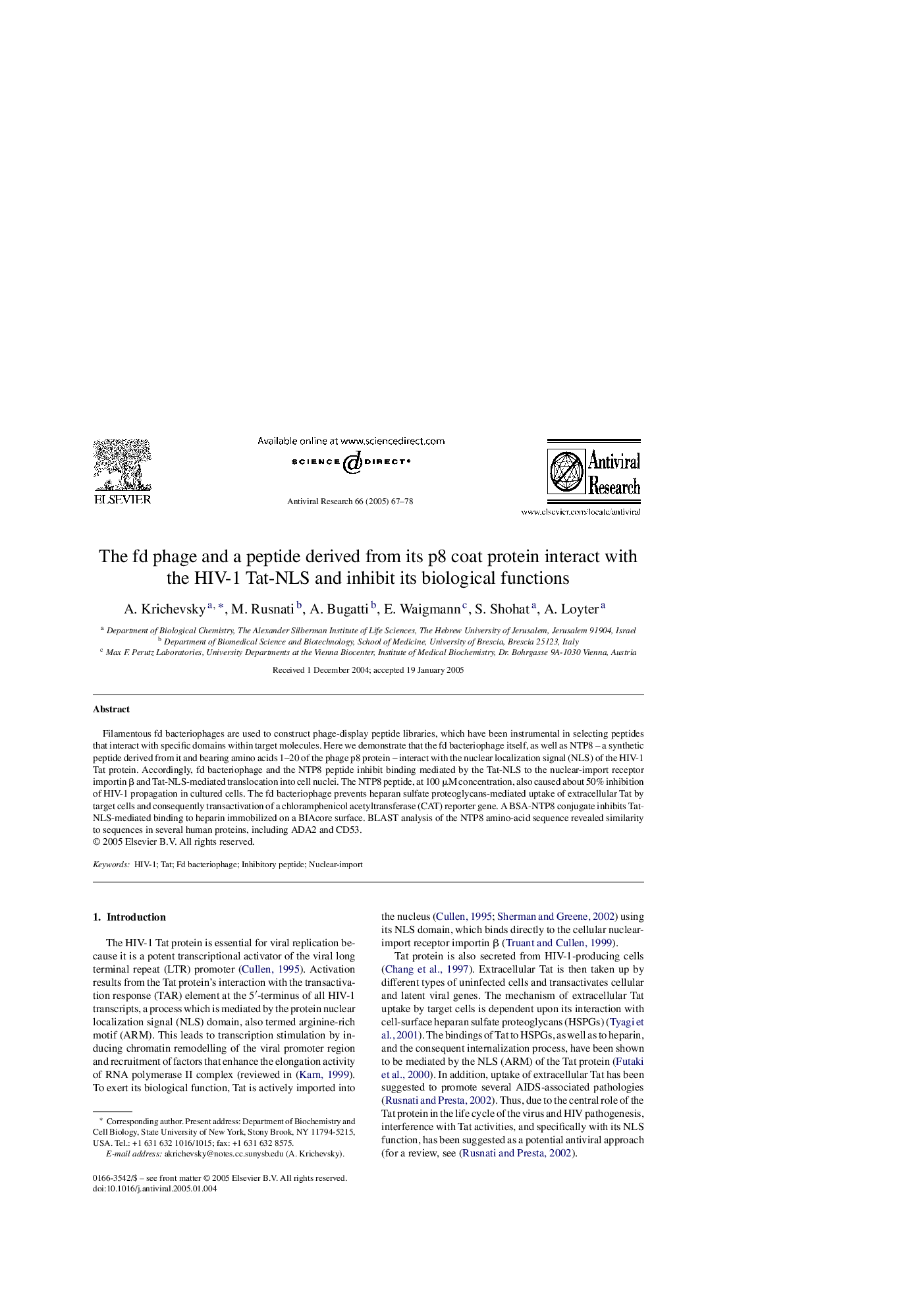| Article ID | Journal | Published Year | Pages | File Type |
|---|---|---|---|---|
| 9000958 | Antiviral Research | 2005 | 12 Pages |
Abstract
Filamentous fd bacteriophages are used to construct phage-display peptide libraries, which have been instrumental in selecting peptides that interact with specific domains within target molecules. Here we demonstrate that the fd bacteriophage itself, as well as NTP8 - a synthetic peptide derived from it and bearing amino acids 1-20 of the phage p8 protein - interact with the nuclear localization signal (NLS) of the HIV-1 Tat protein. Accordingly, fd bacteriophage and the NTP8 peptide inhibit binding mediated by the Tat-NLS to the nuclear-import receptor importin β and Tat-NLS-mediated translocation into cell nuclei. The NTP8 peptide, at 100 μM concentration, also caused about 50% inhibition of HIV-1 propagation in cultured cells. The fd bacteriophage prevents heparan sulfate proteoglycans-mediated uptake of extracellular Tat by target cells and consequently transactivation of a chloramphenicol acetyltransferase (CAT) reporter gene. A BSA-NTP8 conjugate inhibits Tat-NLS-mediated binding to heparin immobilized on a BIAcore surface. BLAST analysis of the NTP8 amino-acid sequence revealed similarity to sequences in several human proteins, including ADA2 and CD53.
Keywords
Related Topics
Life Sciences
Immunology and Microbiology
Virology
Authors
A. Krichevsky, M. Rusnati, A. Bugatti, E. Waigmann, S. Shohat, A. Loyter,
